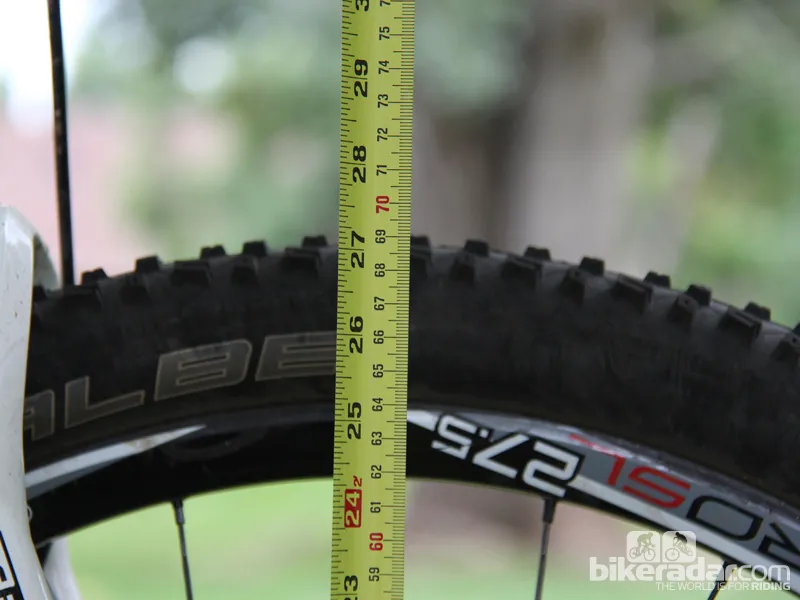Question: “I borrowed a buddy’s new 27.5in mountain bike for the weekend. I could not tell much, if any, difference between it and my 26in trail bike. It certainly didn’t roll as well as my 29er. Is 27.5 just an attempt to get riders to upgrade?”
Answer: This week, I’m using Trail Tech as a soapbox to tilt at windmills. Not just any windmill, mind you. There’s a certain windmill – one with a bead seat diameter of 584mm that goes by the name of '650b' – that needs to be dealt with.
Not a week goes by that we don’t have a story on BikeRadar about another bike company releasing a 650b bike, wheelset, tire, or fork. News stories about 650b mountain bikes appear to go hand in hand with comments from the peanut gallery about how “650b is just an industry ploy to sell more bikes”.
While 650b may or may not be an industry conspiracy, calling it '27.5' most certainly is. Why should you care? Well, because you’re being sold the erroneous notion that mountain bikes with 650b tires occupy a Zen-like middle ground between the low weight and flickability of 26in wheels and the momentum-carrying, obstacle-smashing attributes 29er riders love.
This had led several bike companies to foresee a day in the near future when 26in and 29in mountain bike wheels will become obsolete. In this future, Spandex-clad cross-country racers, average Joe trail riders, and flat brim-wearing gravity shredders join hands around a 27.5in campfire, sing Kumbaya and rejoice that we have come full circle; we are at one with the wheel once more. I’m not holding my breath; 26in wheels are still fun and you can have my 29er when you pry it from my cold, dead hands.
The idea that the 650b mountain bike embodies the best of both worlds without the hangups of either is as misleading as the 27.5 label. One has to run a very large 650b tire before you actually reach a measurement of 27.5in from the ground to the top of the tire.

The 650b mountain bike doesn't split the difference between 26in and 29in wheels
That’s because the 650b wheel is much closer in diameter to a 26in wheel. For reference, there’s a 25mm difference in bead seat diameter between 26in and 650b, but there’s a 38mm difference between 650b and a 700c (29in) wheel.
It's easy to fall into this 'tweener' mindset. I'm guilty of calling it "the middle wheel size" when searching for a synonym for '650b'. And I must admit that several of the 650b trail bikes I've ridden this season do have a Goldilocks-like feel to them. (The Norco Sight B1 and Santa Cruz Bronson come to mind.)
But this sensation is more the result of dialed frame geometry than of cramming a slightly larger wheel into a frame. And, yes, wheel size and frame geometry go hand in hand, but it’s the latter that truly makes a bike perform on the trail.
I don’t think 650b wheels are a crock, or that the differences between them and 26in wheels are so small that they're not worth the fuss – that's for you to decide on the trail.
There are performance gains that come with the slightly larger diameter wheel, and there are a lot of great 650b mountain bikes being produced. But the advantages don't place the wheel size smack dab in between 26in and 29in formats.
As for the conspiracy theorists out there, yes, there has been a concerted effort by bike and component companies to develop new 650b products because there are small but measureable performance gains over 26in wheels. Some folks seem to forget that bike companies are not non-profits (at least not on purpose) and that their employees have mouths to feed, too.
In the end, I know I’m fighting a losing battle. When it comes to naming the wheel format, '27.5' will trump '650b' because it makes more sense when explaining the differences between one size and another on the sales floor. As riders and as consumers, just keep in mind that those differences are not cut straight down the middle.
